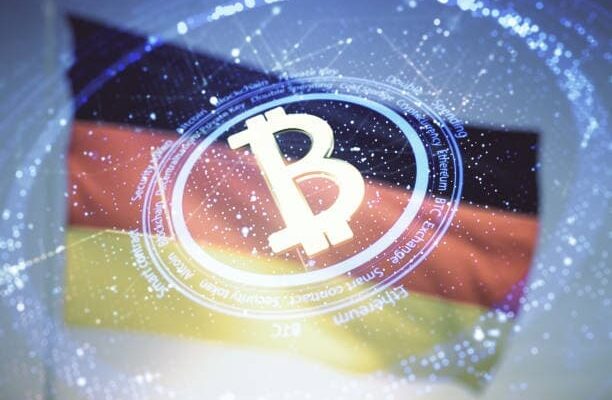Every power outlet, and every electrical device in your home communicates seamlessly with each other, optimizing energy usage and reducing waste. This isn’t just a dream; it’s the reality that’s unfolding with the integration of cryptocurrency technology into smart grid systems. The marriage of blockchain and smart grids is not just a technological breakthrough but a revolution that’s transforming the way we generate, distribute, and consume electricity.
Cryptocurrency, with its decentralized and secure nature, is proving to be a game-changer in the energy sector. By introducing a new layer of transparency and efficiency, crypto is redefining the smart grid landscape. Let’s dive into how this synergy is reshaping the future of energy management.
The Power of Decentralization
Decentralization is at the heart of cryptocurrency, and it’s this very principle that’s making waves in smart grid technologies. Traditional grids are centralized, which means they’re vulnerable to power outages and cyber-attacks. By decentralizing the grid, we can distribute power generation and storage, making the system more resilient and less susceptible to disruptions. This is where Taiwan Crypto Insights comes into play, providing valuable insights into how decentralization can be leveraged to enhance grid stability and security.
Blockchain for Transparency and Trust
Blockchain technology is known for its ability to create a transparent and immutable ledger of transactions. When applied to smart grids, this means that every unit of energy generated, distributed, and consumed is recorded on a blockchain. This transparency not only prevents fraud but also builds trust among all parties involved in the energy ecosystem. Taiwan Crypto Insights has been instrumental in highlighting the benefits of blockchain in ensuring that energy transactions are fair and verifiable.
Tokenization of Energy
One of the most exciting aspects of crypto in smart grids is the tokenization of energy. Energy tokens represent a specific amount of energy and can be traded on a blockchain platform, just like cryptocurrencies. This allows for a more flexible and dynamic energy market where consumers can buy and sell energy directly with each other. Taiwan Crypto Insights has been at the forefront of exploring the potential of energy tokens, showing how they can empower consumers and create new business models in the energy sector.
Smart Contracts for Automation
Smart contracts are self-executing contracts with the terms of the agreement directly written into code. In the context of smart grids, these contracts can automate energy transactions, ensuring that they’re executed efficiently and securely. For example, if a household generates more energy than it uses, a smart contract can automatically sell the excess energy back to the grid or to neighbors. Taiwan Crypto Insights has been shedding light on the practical applications of smart contracts in streamlining energy transactions and reducing administrative costs.
Enhancing Grid Security with Crypto
Security is a critical concern in any digital system, and smart grids are no exception. Cryptocurrency technology, with its advanced cryptographic techniques, can significantly enhance the security of smart grids. By using cryptographic keys and secure communication protocols, smart grids can protect against unauthorized access and data tampering. Taiwan Crypto Insights has been emphasizing the importance of robust security measures in safeguarding the integrity of smart grid operations.
Scalability and Flexibility
As the demand for renewable energy sources grows, so does the need for a grid that can adapt to fluctuating energy supplies. Cryptocurrency technology, with its ability to scale and manage complex networks, is perfectly suited to handle the challenges of a modern, renewable energy-driven smart grid. Taiwan Crypto Insights has been discussing the scalability of crypto solutions, showing how they can accommodate the growing needs of the energy sector.
The Role of IoT in Smart Grids
The Internet of Things (IoT) is another key player in the smart grid revolution. IoT devices can collect and transmit data about energy usage, allowing for real-time monitoring and management. When combined with cryptocurrency technology, this data can be used to create a more responsive and efficient energy grid. Taiwan Crypto Insights has been examining the intersection of IoT and crypto, exploring how their combined power can lead to innovative solutions in energy management.
The Future of Energy Trading
The integration of crypto into smart grids is not just about improving existing systems; it’s about reimagining the entire energy trading landscape. With crypto, energy can be traded peer-to-peer, bypassing traditional intermediaries and reducing costs. This could lead to a more competitive and customer-centric energy market. Taiwan Crypto Insights has been providing insights into the future of energy trading, envisioning a world where energy is as easy to trade as digital assets.
Conclusion
The revolution in smart grid technologies is not just about making our energy systems more efficient; it’s about creating a more sustainable and equitable energy future. Cryptocurrency technology is the catalyst that’s making this vision a reality. By decentralizing power, ensuring transparency, and automating transactions, crypto is transforming the way we think about and interact with energy. As we continue to explore the potential of this technology, one thing is clear: the future of energy is crypto-powered. And as Taiwan Crypto Insights continues to provide valuable insights into this space, we can look forward to a future where energy management is not just smart, but revolutionary.

